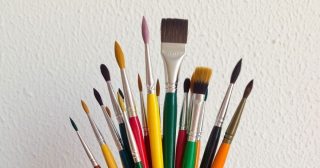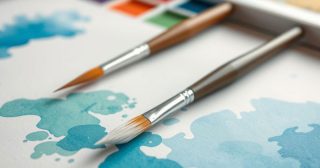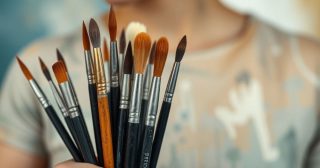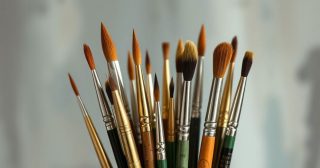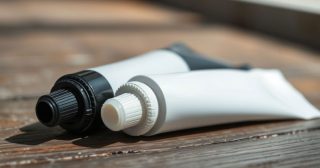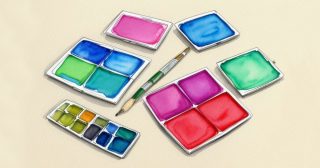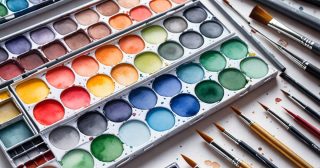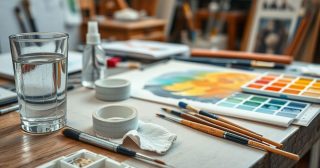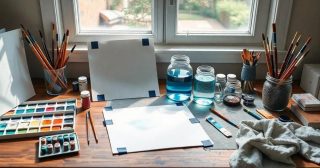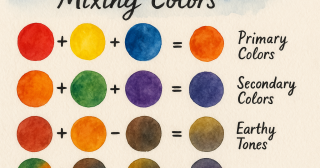How to mix color for Water Color Drawing
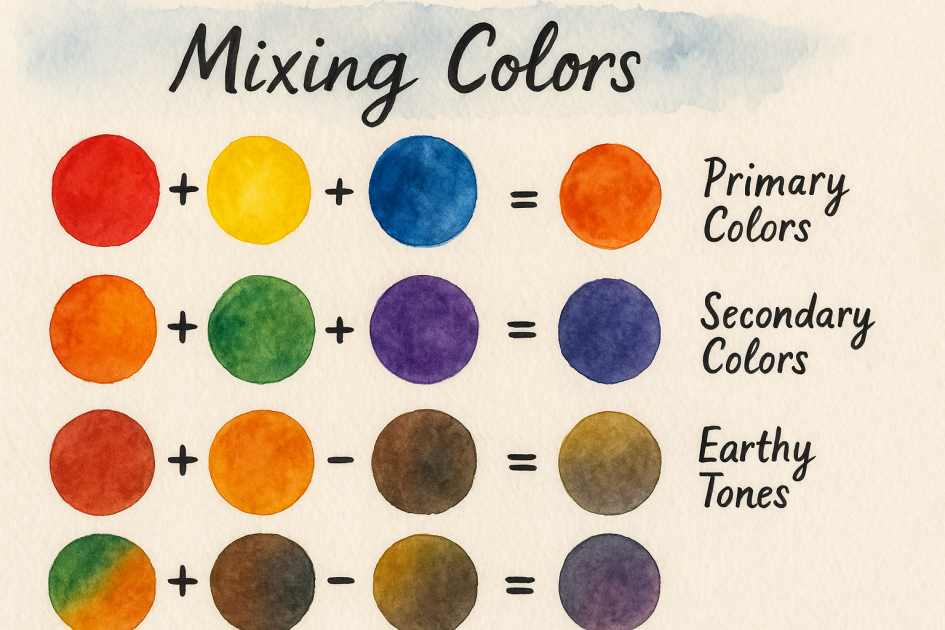
1. Start with Primary Colors
-
Red, Yellow, and Blue are the primary colors in watercolor (just like in traditional color theory). By mixing these colors, you can create a wide range of secondary and tertiary colors.
-
Red + Yellow = Orange
-
Yellow + Blue = Green
-
Blue + Red = Purple
2. Create Secondary Colors
Secondary colors are made by mixing two primary colors together. You can control the shades by adjusting the amount of each primary color:
Orange (from Red + Yellow) can be made warmer or cooler by adding more red (warm orange) or more yellow (yellow-orange).
Green (from Yellow + Blue) can be adjusted by adding more yellow (yellow-green) or more blue (blue-green).
Purple (from Blue + Red) can be deepened with more blue or made lighter with more red.
3. Adjusting Tone and Saturation
Adding More Water: When you mix colors with more water, you make them lighter and more transparent. This is called a "wash."
Adding More Pigment: If you want a darker or more intense color, add more pigment to your water.
4. Mixing Warm and Cool Colors
Warm Colors: Red, orange, and yellow. These colors create a sense of warmth and energy.
Cool Colors: Blue, green, and purple. These colors tend to be calming and create a sense of space.
By adjusting the temperature (warm or cool) of your mixes, you can influence the mood of your artwork. For example, mixing a cool blue with a warm yellow can create a more interesting, vibrant green.
5. Creating Earthy Tones
To create muted, natural colors, mix complementary colors (colors opposite each other on the color wheel). When you mix complementary colors, they neutralize each other, resulting in browns, grays, or earthy tones:
Red + Green creates a brownish hue.
Blue + Orange creates a muted tone.
Yellow + Purple gives a dull, earthy color.
6. Using a Limited Palette
Many watercolor artists prefer to use a limited color palette. This can create a harmonious, unified look. A common limited palette for beginners includes:
Primary Colors: Red, Yellow, and Blue.
Secondary Colors: Green, Orange, and Purple (which you make by mixing primary colors).
You can experiment with mixing these colors to get a wide variety of shades, tones, and textures.
7. Mixing Bright Colors
To create brighter, more intense colors, use high-quality pigments that are naturally vibrant. Always add more water gradually to avoid dulling the pigment. Avoid over-mixing, as too much blending can turn the color muddy.
8. Tips for Mixing Colors:
Test Before Applying: Always test your mixed color on a scrap piece of watercolor paper before applying it to your artwork.
Keep a Color Chart: Make a color chart to see how the pigments interact with one another. This will help you understand how much pigment or water to add to achieve a desired result.
Work from Light to Dark: When layering watercolors, start with lighter washes and then add darker tones once the lighter ones dry. This will help you create depth.
9. How to Mix with White
Use White Paint Carefully: Unlike oil or acrylic paints, white is not traditionally used to lighten watercolors. Water is the medium for lightening and making washes. However, you can use Gouache (opaque watercolor) for lighter colors if you need more coverage or to add highlights.
10. Creating Natural Tones
For skin tones, foliage, or natural scenery, try mixing your own versions of browns, greens, and earthy tones by using combinations of:
Red + Yellow for a base skin tone.
Yellow + Blue for foliage greens.
Red + Green for earth tones and shadows.
Example Mixing:
Mixing Greens:
Add more yellow for a bright, warm green (like spring leaves).
Add more blue for a cool green (like pine needles).
Creating Purple:
Mix equal parts red and blue for a balanced purple.
Add more red for a warm, reddish purple (like magenta).
Add more blue for a cooler, bluish purple (like lavender).
Experiment and Have Fun!
Watercolor is all about experimentation. Don’t be afraid to mix colors and test different ratios to discover the results that best fit your artwork. Over time, you’ll learn how to mix colors with confidence and create stunning, vibrant pieces.
Feel free to ask if you want more details on specific mixing techniques or color ideas!

